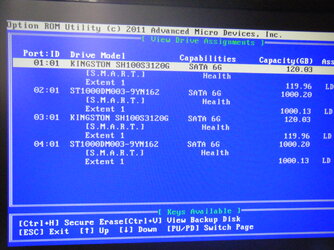- Joined
- Dec 27, 2008
I tried to install Windows on a SATA drive that had recently been used in a RAID 0 configuration and Windows couldn't see it when it even thought it showed up in post and in bios. I went back into bios and changed the SATA configuration from AHCI to RAID. I restarted and when the RAID initialization message showed in post I hit CTRL F to enter the RAID setup. From there I chose one of the menu items that allowed me to wipe the drive through a low level format which removes the RAID metadata. Then I rebooted and went back into bios and changed the SATA mode back to AHCI. This time Windows recognized the drive.
You can also remove RAID metadata with a live Linux CD using terminal commands: http://ubuntuforums.org/showthread.php?t=1600014. If you are only using one of the two drives from the old RAID then leave out the command switch for the other one. This may be quicker if you already have a Linux live disc around as low level formatting is a slow process.
You can also remove RAID metadata with a live Linux CD using terminal commands: http://ubuntuforums.org/showthread.php?t=1600014. If you are only using one of the two drives from the old RAID then leave out the command switch for the other one. This may be quicker if you already have a Linux live disc around as low level formatting is a slow process.
